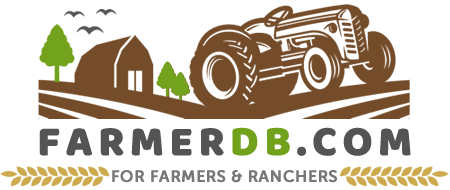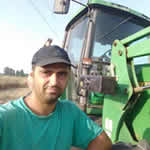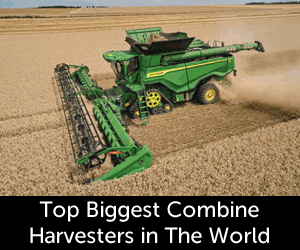Ayrshire is a dairy cattle breed originating from Ayr County in Scotland.
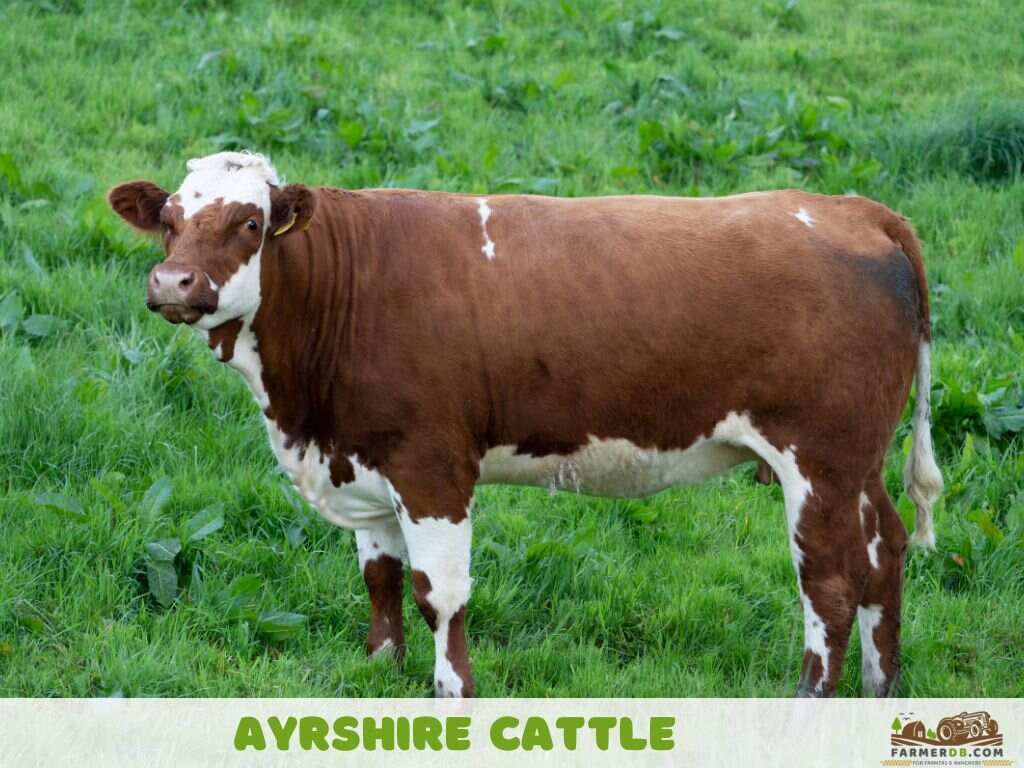
Its history dates back to before 1800, though the exact details remain uncertain. Even its name has changed over time, as the breed was known by different names across the three districts of Ayr: Dunlop, Cunningham, and eventually, Ayrshire.
Just like its history, the genetic origins of Ayrshire cattle are unclear. It is unknown which cattle breeds contributed to its development. Some evidence suggests that cattle from the Channel Islands played a role in improving the breed in Ayr, while others believe it may have originated in Holland.
This breed was officially recognized in 1814 by the Highland and Agricultural Society, and by 1822, it was exported to Connecticut, United States.
In 1875, the Ayrshire Cattle American Association (see refs.) was formed, followed by the establishment of the Approved Ayrshire Milk Program, which certified farms that owned Ayrshire cattle.
Contents
Characteristics
Color
These cattle are red and white and produce only red and white offspring.
The red coloration varies from light to very dark. Some even describe it as a reddish-brown mahogany. In bulls, the mahogany shade can be so deep that it appears almost black when contrasted with the white.
Their markings typically have jagged edges, and in many cases, the red and white remain clearly separated. Some cattle also have speckled red pigmentation on their skin beneath white hair.
Head
The head is medium in size and well-proportioned to the overall body. It has a straight or gently curved profile, while the face is elongated with a clean-cut structure. The muzzle is broad, with strong, well-defined nostrils. The ears are medium-sized, upright, and may have red or brown pigmentation on the inner and outer edges.
Horns
Ayrshire cattle are horned.
Their horns are medium to long, curving outward and upward. They are white with dark tips and were historically valued for their elegant shape.
Nowadays, in dairy farming, most of them are dehorned at a young age for safety reasons.
Some breeders also selectively breed for polled (hornless) Ayrshires.
Body
These cattle have a lean body suited for a dairy breed. Their frame is moderate in size, with a strong but not overly muscular build. The shoulders blend smoothly into the straight, level back, while the underline is clean, the chest is deep, and the ribs are well-sprung.
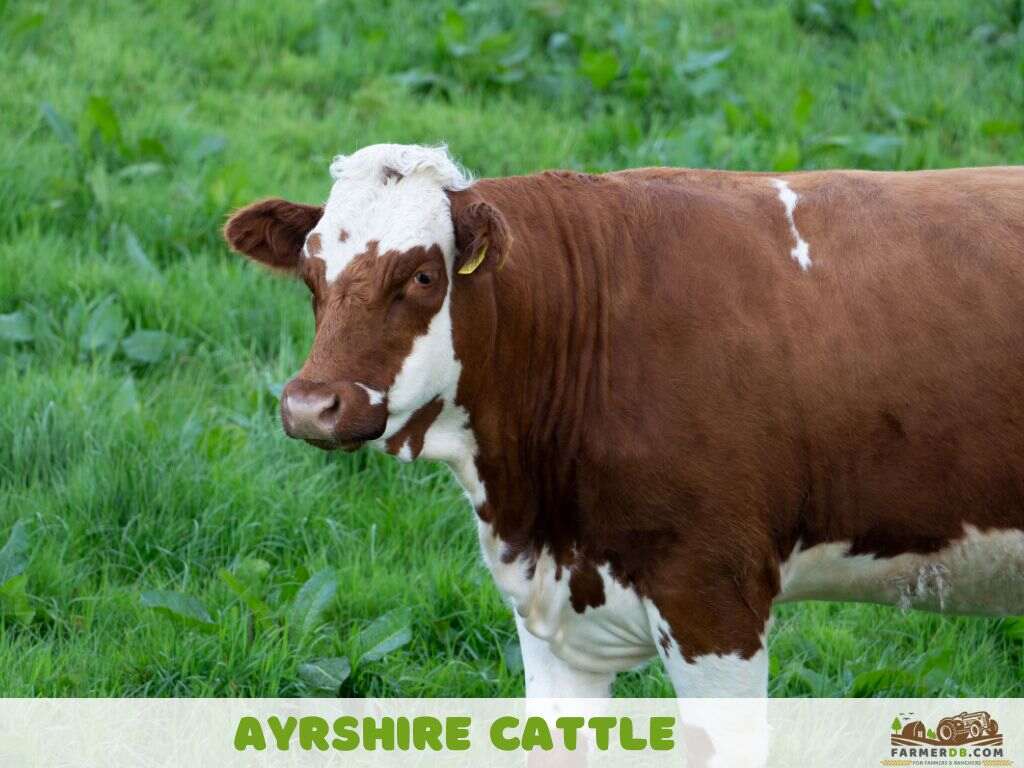
Legs
Both front and hind legs are straight, strong, and well-placed. The hooves are hard, well-shaped, and durable.
Udder and Teats
The udder is high and well-attached, and the teats are moderate in size.
Size
This breed belongs to the medium-sized cattle class.
When it comes to height, it is worth noting that past Ayrshires were smaller than modern ones.
In the past, bulls typically stood 55 inches (140 cm) tall, whereas today, they can reach 59 inches (150 cm). Mature cows used to measure around 50 inches (127 cm), but now they can stand up to 53 inches (135 cm).
Lifespan
These cattle can live 12 to 15 years.
If raised in a less intensive farming environment, they can even live over 20 years. Their long lifespan is one of the traits considered an advantage in the dairy industry.
Growth Rate
How fast do they grow?
The growth rate of this dairy breed can be classified somewhere between moderate and fast.
It grows faster than a Jersey cattle but a bit slower than Holsteins.
Weight
The modern cattle can weigh between 1,323 to 2,205 lbs (600 to 1,000 kg).
Ayrshires from earlier years were slightly lighter, as they were smaller in size, with bulls averaging 1,653 lbs (750 kg) and cows around 1,102 lbs (500 kg).
The calves at birth can have an average weight of 76 lbs (34.47 kg).
According to some growers, the weight of calves can vary significantly depending on genetics and diet. Some Ayrshire calves have been reported to weigh 110 to 115 lbs (49.9 to 52.16 kg).
| Age (months) | Weight (lbs) |
|---|---|
| 1 | 76 lbs (34.5 kg) |
| 4 | 215 lbs (97.5 kg) |
| 6 | 330 lbs (149.7 kg) |
| 10 | 550 lbs (249.5 kg) |
| 12 | 630 lbs (285.7 kg) |
Temperament
They are gentle, calm, and obedient.
Both cows and bulls show no signs of aggression, not even during mating periods, unlike some other cattle breeds.
The cows are docile and let you milk them without any trouble. Some people have mentioned having cows with damaged teats, but they could still be milked easily because the cow never showed any resistance.
In their environment, they are calm and sometimes even shy, but they also have moments of curiosity when something new appears. However, jumping over fences is not in their nature.
They enjoy staying peaceful and grazing, as grazing is one of their natural and instinctive behaviors.
Milk
These cows are known for producing milk with 4.91% butterfat and 3.63% protein.
On average, they produce over 1,044 gal (5,284 l) of milk with a butterfat percentage of 3.9% in official DHIR tests. With proper care and feeding, individual Ayrshire herds can average as high as 1,479 gal (7,486 l) of milk and 700 lbs (317.5 kg) of butterfat.
The world record for Ayrshire milk production is held by Lette Farms Betty’s Ida, who, in just 305 days, produced an impressive 3,233 gal (16,368 l) of milk and 1,592 lbs (722.4 kg) of butterfat with twice-daily milking.
Another Ayrshire has even reached over 3,567 gal (18,055.6 l) of milk and 1,800 lbs (816 kg) of butterfat in 365 days, although this is not officially recognized by the Ayrshire Breeders’ Association.
Besides its impressive milk production, the Ayrshire breed is capable of producing up to 1,320 gallons (5,000 liters) of milk from forage alone, while still maintaining a healthy body condition.
Raising
Feeding
You can feed these cattle the following list of feeds:
- Grass such as alfalfa, clover, and ryegrass
- Forage like fermented grass or maize
- Hay such as grass hay or alfalfa hay
- Grain and concentrates like corn, barley, and oats
- Protein supplements like soybean meal, fish meal, and canola meal
These cattle have great efficient forage conversion and can adapt to any diet, as long as it meets their nutritional needs.
For the most part, it’s sufficient to let them graze on high-quality pasture grass.
Keep in mind that they are also popular because they tend to perform better under pasture conditions compared to other major dairy breeds, especially when pastures are poor.
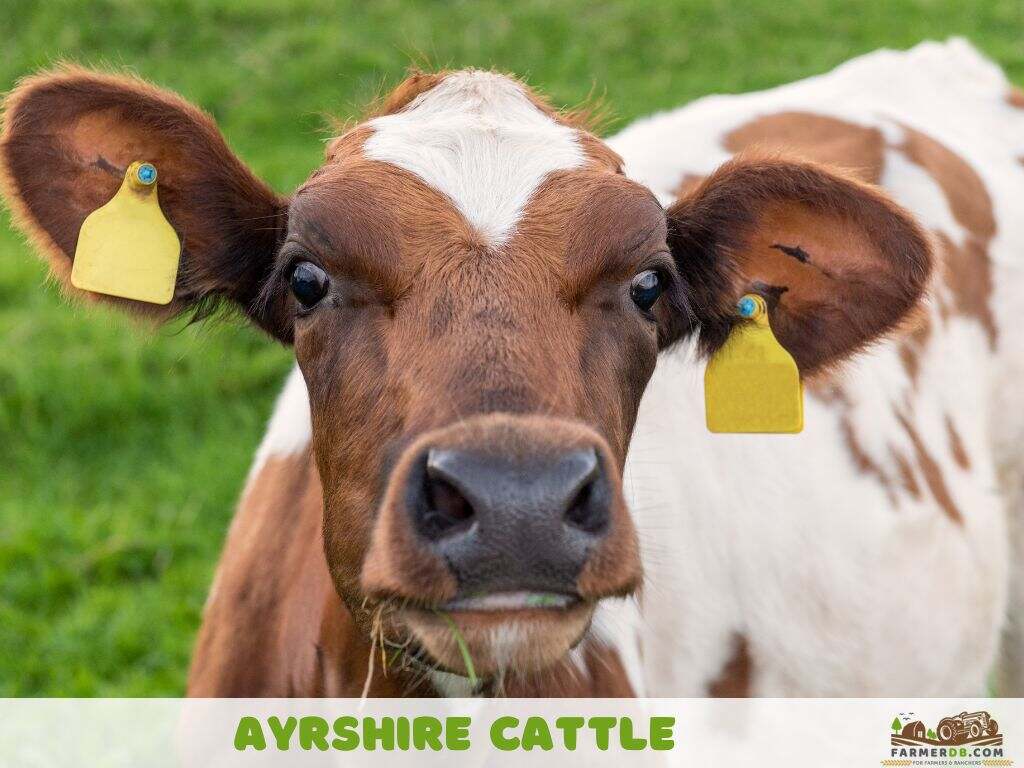
Even during the colder seasons when pasture is unavailable, you’ll need to feed them less hay or grains than other cattle breeds.
To keep them healthy, it’s important to add minerals such as calcium, magnesium, phosphorus, and salt, along with vitamins A, D, and E to their diet.
Water is also crucial at all times, as hydration is closely linked to milk production. Cows drink large amounts of water daily, particularly during lactation.
Environment
The ideal environment for these cattle is one with free access to pasture, but they can also adapt to intensive systems where the diet is based on a mix of grass, forage, grains, and concentrates, with less access to pasture.
What’s important is that the environment doesn’t cause them stress, allowing them to stay healthy and ensuring their milk production remains unaffected.
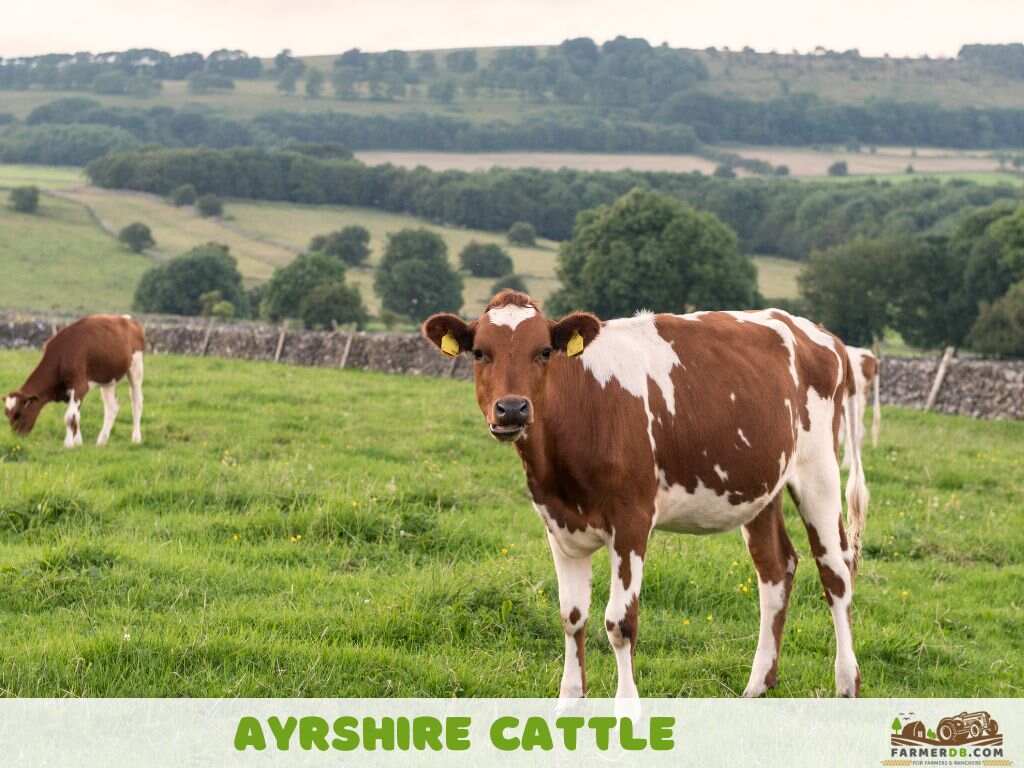
Climate and Shelter
This breed does well when raised in temperate climates with mild winters and cool summers that do not place stress on their bodies or milk production.
If you want to raise them in hotter or colder climates, they can adapt, but you must provide good conditions to keep them stress-free. For example, in hotter areas, you will need to create a shaded area where they can stay out of the sun. In colder climates, you should prepare a sheltered area with proper ventilation and dry bedding to keep them warm.
How many cattle per acre?
One Ayrshire cattle needs 1.5 to 2 acres.
This breed requires fewer acres than other breed due to their great feed conversion efficiency and ability to develop in both lush pastures and areas with less vegetation.
The required acreage per cattle also depends on farm management practices and the diet provided.
Breeding
The heifers can be bred starting as early as 15 months old or when they reach 55 to 65% of their mature body weight. If the heifer does not reach this by 15 months, it is advisable to wait an additional 1-2 months.
Bulls can start breeding at 12 months old but reach full fertility around 18 months old.
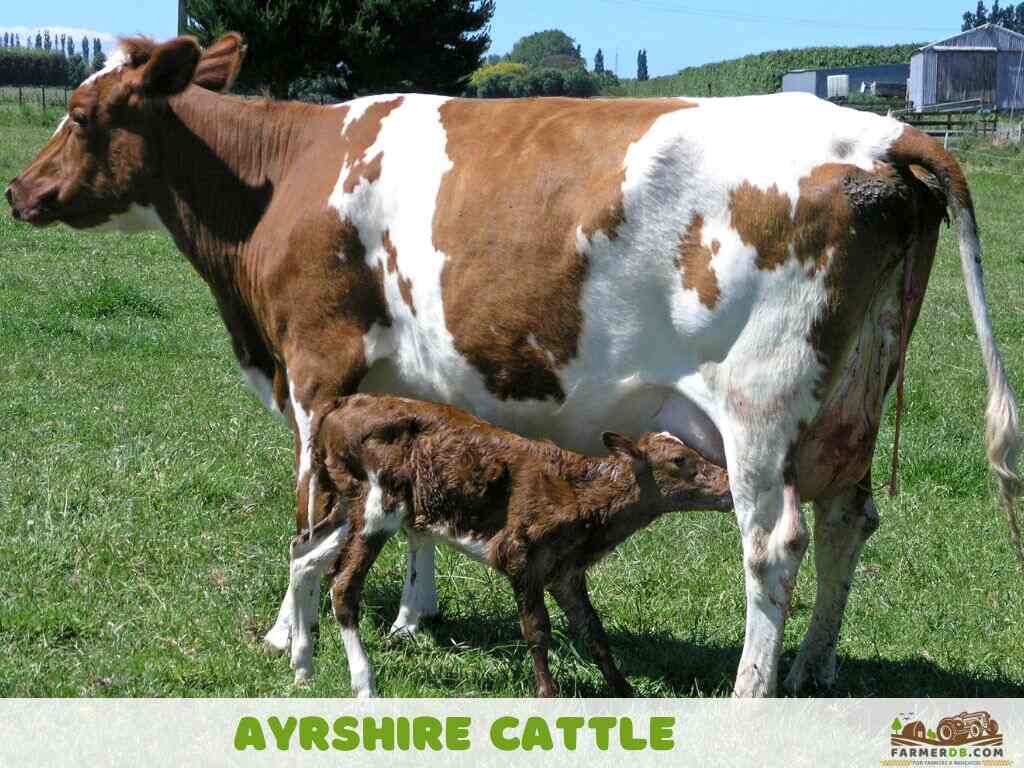
These cattle have high fertility rates for both sexes. Bulls have strong libido and are often used in artificial insemination (AI) programs due to their desirable traits.
You can breed them through different methods:
- Natural mating, where the bull is left with the herd on the pasture.
- Artificial insemination (AI).
One mature Ayrshire bull can service 25 to 40 cows per season.
The first step in breeding them is to select bulls and cows with the right traits that you want to pass on to their offspring.
The second step is to detect when the cows come into heat. They are in heat every 18 to 24 days, and it lasts 12 to 18 hours. You can check for signs such as mucous discharge from the vulva, increased movement and restlessness, or mounting by other cows.
The gestation period for this breed is between 280 and 285 days. The cows usually give birth to one calf per pregnancy, but twins are also possible.
If needed, here is a Cattle Gestation Calculator
The calving process is generally smooth and without major issues, but it is recommended to keep an eye on heifers, as the first birth can be more challenging.
The mothers take good care of their calves and produce more than enough milk to feed them.
Terminal vs. Maternal
This breed is maternal, as it has key maternal traits such as very good milk production and strong maternal instincts, rather than terminal traits.
Health Issues
They have strong immunity and can resist many common cattle diseases. They also have strong hooves, good udder health, and a lower incidence of metabolic disorders compared to other dairy breeds. However, mastitis can be an issue due to their high milk production.
Why should you raise it?
If you are a homesteader motivated and passionate about making your own dairy products at home, it is worth giving this cattle breed a chance.
The high milk yield with very good fat and protein content allows you to produce cheese and butter in your own kitchen. Ayrshire cattle are independent and low-maintenance, requiring minimal time investment, especially if they have access to pasture for grazing throughout the day.
They also consume less feed than some other breeds, which helps reduce long-term costs and lower land requirements.
The initial investment is also more affordable compared to other breeds, with heifers typically priced between $1,500 and $1,900.
Advantages
- Efficient forage conversion
- Early breeding age
- Great milk production
- Good foraging ability
- Strong maternal instincts
- High fertility
- Hardy and adaptable
- Moderate growth rate
Disadvantages
- Mastitis risk
- Late fertility in bulls
- Limited popularity compared to other dairy breeds
References
- Cattle Society of Great Britain and Ireland link
- Growth Studies with Ayrshire Cattlelink
- U.S. Ayrshire Breeders Association link
- Wisconsin Ayrshire Breeders Association link
Do you have any experience with the topic discussed here?
Would you like to improve the information shared and contribute your practical knowledge on the subject?
Your real-world experience as a farmer or rancher could greatly benefit other members, and the community would deeply appreciate your contribution.
